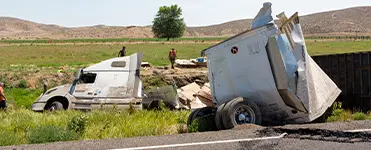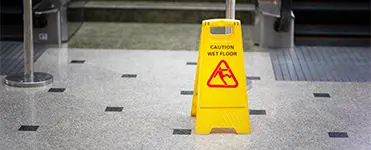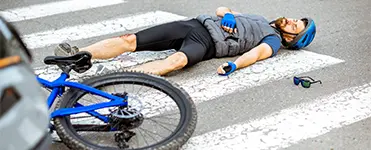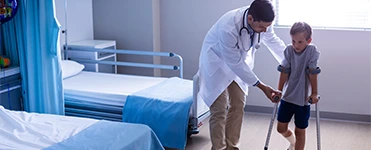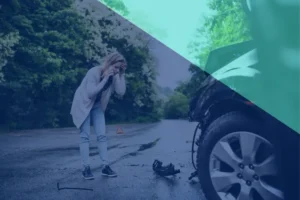Bicycle Hand Signals: California Bicycle Laws & Accident Liability
In the state of California, where the allure of scenic roads and idyllic weather are welcoming to cyclists, the bicycle has become an integral part of the transportation landscape. However, with its ever-growing popularity, the coexistence of bicycles and motor vehicles on the road presents a unique set of challenges.
Cyclists and motorists alike must navigate the complex web of traffic regulations and laws to ensure safe sharing of the road. One vital aspect of this coexistence revolves around the use of bicycle hand signals, a fundamental means of communication for cyclists, helping them navigate through traffic and signal their intentions.
As the Golden State continues to lead the nation in promoting cycling as a sustainable and healthy mode of transportation, both cyclists and motorists must have a comprehensive understanding of California’s bicycle laws and their legal implications in case of an accident.
In today’s blog, we will delve into the essential role of bike hand signals in ensuring road safety, explore the relevant California bicycle laws that govern their use, discuss accident liability, and explore the legal recourse available to those involved in bicycle accidents. In particular, we will focus on:
- The importance of bicycle hand signals
- The bicycle laws of California
- Liability in bicycle accidents
Injured in a bicycle accident in Bakersfield?
The Significance of Bicycle Hand Signals
Bicycle hand signals‘ role in California road safety cannot be overstated. They play a pivotal role in preventing accidents and fostering communication between cyclists and other, often motorized, road users. The following hand signals are required by the National Highway Traffic Safety Administration for cyclists when making turns or stopping, following state law:
- Left Turn: Extend your left arm straight out to the left side.
- Right Turn: Extend your left arm out to the left side and bend it upward at a right 90-degree angle, forming an “L” shape.
- Stop or Slow Down: Extend your left arm out to the left side and bend it downward at a right angle, forming an inverted “L” shape.
These common hand signals help indicate your intentions to other road users, such as motorists and other cyclists, and are an important part of safe and responsible cycling. Always make these signals clearly and deliberately to ensure that others can understand your intentions while riding your bicycle. Here are several key reasons why learning signals is critical for California’s cyclists:
- Enhancing Visibility and Awareness: Bicycle signals serve as a visual cue to motorists and fellow cyclists about the intentions of the rider. In a state as populous as California, the ability to effectively communicate one’s actions on the road is paramount. Proper hand signals can help other road users anticipate a cyclist’s moves and adjust their own actions accordingly.
- Reducing Confusion and Misunderstandings: California’s dynamic traffic environment can often lead to situations where cyclists and motorists share the road. Misunderstandings and confusion can arise, especially in high-traffic areas. Basic signals provide a standardized means of communication, helping to minimize uncertainty and improve predictability.
- Preventing Collisions and Accidents: Failing to signal a turn, stop, or lane change can result in dangerous situations and even accidents. Properly executed cyclist hand signals provide advanced notice to other drivers, enabling them to react appropriately. This proactive communication is especially crucial at intersections, where the majority of bicycle accidents occur.
- Compliance with California Traffic Law: In California, Vehicle Code Section 22107 mandates the use of hand signals for turning and stopping. Failure to comply with this law can lead to penalties and fines. Understanding and adhering to these regulations is essential for all cyclists to avoid all legal consequences.
- Promoting Responsible Cycling: Using bike hand signals is a hallmark of responsible and considerate cycling. Cyclists who employ proper hand signals exhibit their commitment to safety and cooperation with fellow road users, which not only fosters a more harmonious traffic environment but also positively shapes public perception of cyclists as responsible citizens.
- Data-Driven Safety: Studies and accident data consistently reinforce the importance of hand signals in reducing the risk of accidents involving cyclists. By providing clear indications of their movements, cyclists can significantly decrease the likelihood of being involved in collisions with motor vehicles.
- Supporting Cycling Advocacy: The responsible use of hand signals by cyclists is integral to advocacy efforts for cycling infrastructure and safety. By adhering to traffic rules and norms, cyclists contribute to a more persuasive case for investments in bicycle lanes, signage, and other safety measures.
In other words, bicycle hand signals are essential to navigate our state’s roads safely and efficiently, fostering a culture of shared responsibility among all road users. Using hand signals also contributes to the collective goal of reducing accidents and enhancing the overall safety and enjoyment of cycling in the Golden State.

Bicycle Laws of California
California bicycle laws are designed to ensure the safety of cyclists, motorists and pedestrians on the road. Beyond the requirement of using bike hand signals, here are some of the most important bicycle laws in California:
Helmet Requirement
In California, anyone under 18 years old is required to wear a properly fitting and fastened bicycle helmet while riding a bicycle.
Rules of the Road
Bicyclists must follow the same rules of the road as motor vehicles. This includes obeying traffic signals and signs, stopping at stop signs, and yielding the right of way when required.
Bike Lanes and Shoulders
Bicyclists are generally required to use bike lanes and bike paths when they are available. If a bike lane is present, it’s illegal to ride on the roadway unless entering or leaving the lane, avoiding obstacles, or making a left turn. When there is no bike lane or path, cyclists can use the roadway.
Lights and Reflectors
Bicycles must have a front white light to avoid road hazards and a red rear reflector when riding at night. It’s also a good idea to have additional lights and reflective materials to increase visibility.
Sidewalk Riding
In California, there is no statewide law against riding a bicycle on the sidewalk, but it may be regulated at the local level. Cyclists on sidewalks should yield to pedestrians and use caution.
Riding Two Abreast
Bicyclists can ride two abreast (side by side) on the road, but they must not impede the normal flow of traffic and should move to single file when it’s safe to do so.
No Texting or Phone Use
It is illegal to use a cellphone or other electronic devices while cycling unless it’s in a hands-free mode.
DUI Laws
The same laws that apply to driving under the influence (DUI) of alcohol or drugs also apply to bicycling. Riding a bicycle under the influence can result in penalties.
Passing on the Right
Bicyclists are allowed to pass slow-moving or stopped traffic on the right, but they should use caution and avoid passing on the right if it’s unsafe.
Yielding to Pedestrians
Bicyclists must yield the right of way to pedestrians in crosswalks and on sidewalks, and pedestrians should always have a proper duty of care while walking near bicycle pathways or lanes.
Liability in Bicycle Accidents
In California, liability in a bicycle accident can depend on various factors, including whether you used proper hand signals while on the road. California follows a comparative negligence system, which means that liability for an accident can be shared between multiple parties, including the bicyclist and other involved parties, such as motor vehicle drivers.
Using proper hand signals while cycling is an important safety measure and can potentially affect liability in a bicycle accident. If you signaled your intentions correctly and a collision still happens, it might demonstrate that you were acting responsibly and trying to avoid an accident. However, it doesn’t automatically absolve you of all liability; it often depends on the specific circumstances of the accident, such as:
- Negligence: If a motor vehicle driver or another party involved in the accident acted negligently (e.g., ran a red light, failed to yield, or was speeding), they may be held liable for the accident, and their insurance may cover your damages.
- Comparative Negligence: Even if you used proper hand signals, a court might determine that you were partially at fault if, for example, you didn’t yield the right-of-way when required. In such cases, your compensation may be reduced in proportion to your level of fault.
- Bicycle Laws: Familiarity with California’s bicycle laws above is crucial. If you violate any traffic laws, such as running a red light or stop sign, it could impact your liability in an accident.
- Evidence: The availability of evidence, including witness statements, traffic camera footage, and police reports, can also play a significant role in determining liability.
However, no matter whose fault it was, if you are a victim of a bicycle accident, it’s essential to take the following steps to properly respond to the situation:
- Ensure your safety and seek medical attention immediately.
- Report the accident to the local authorities.
- Exchange information with the other party involved.
- Gather evidence and witness statements.
- Consult with a personal injury attorney in case of disputes.
Ultimately, liability in a bicycle accident can be a complex legal matter, and it’s recommended to consult with a personal injury attorney who specializes in such cases to understand your rights and responsibilities and to navigate the legal process effectively. They can help you determine the best course of action and work to protect your interests.
Get Help From the Experts Today!
If you or a loved one have been injured in a bicycle accident due to the negligence of another person, you can take legal action and file an accident claim to recover the fair compensation you deserve for your injuries and damages. It is crucial to hire a skilled bicycle accident attorney to help you through this complex process.
Ayuda California has years of handling and winning bicycle accident injuries and claims in California. We have recovered millions of dollars in compensation for hundreds of accident victims all over the state. Our dedicated team of bicycle accident lawyers, medical experts, and case managers will work aggressively to ensure you recover the maximum compensation possible for your case. Contact us at (844) 865-0721 for a free, no-obligation consultation. We are available 24/7!






